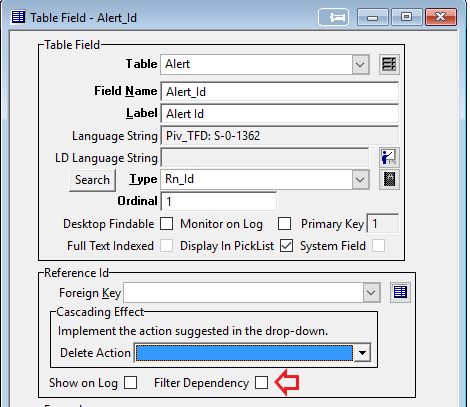Overview
This article lists the most relevant Synchronization Filters, what they are and their benefits.
Information
Sync Filter
A Sync filter defines the subset of table records synchronized from the parent system to a child system. They can provide the following benefits:
- Reduce synchronization time (fewer records to send from the parent system to a child system).
- Limit the size of the recordset sent to a new child system.
For example, if you define a Sync filter as:Create_Date > 10/10/01, only records dated after October 10th, 2001 are synchronized.
The Sync Filters are defined in the Mobile Permissions window only.
Note: Sync filters are only applied to those records sent from the parent system to a child system. All new records created on the child system (including records outside of the Sync filter range) are synchronized with the parent system, for consistency.
Filter Dependency Property
The Filter Dependency property helps determine which records are synchronized, based on the Foreign Key table.
Note: The Filter dependencies chain together. If the Table A foreign key depends on Table B, which in turn depends on Table C, then Table A is filtered based on the Sync filter for Table C. Each extra level creates an extra EXISTS clause in the SQL generated for the filter for Table A.
Don't Sync Property
The Don’t Sync property in the Table object can be used in the Pivotal CRM Toolkit to prevent records in a specific table (for example, a temporary table) from being synchronized. This reduces synchronization traffic by ensuring that the system does not generate LAN notifications for the table.
- It overrides Sync filters, Filter Dependency property, and View filters.
- When the Don’t Sync property is cleared (the default setting), table records are synchronized based on Sync filters or filter dependencies.
Note: Temporary tables store data locally to help agents perform tasks such as data import, record locking, verification, calculation, and error checking.


Priyanka Bhotika
Comments